Choosing the right meat slicer took me some time, I did a lot of research and found a few pitfalls. So I thought I would share some info to help avoid getting the wrong piece of kit.
KEY POINTS
How to Choose a Meat Slicer for Thin Slicing
- Sharp Flat Thin Blade
- Adequate Power
- Precision Controls
- Sized to match
Bui lt-in Sharpener- Heavy Weight for Sturdiness
The day I bought a proper meat slicer for cured meats, I got so excited over my first wafer-thin piece of dry-cured meat. It was a homemade braesola that had been in the curing chamber for three months. I used all my different types of knives previously but just couldn’t get that wafer-thin deli cut, but now I can!
After a ton of in-store and online research on meat slicers, I have tried out various brands in some commercial kitchens and even a few butchers. I have also interrogated some of the local delis I visit. You see many of them in kitchen stores, but most won’t do the job. There

So here is what I think are the most important factors for picking a meat slicer, especially if you are making dry-cured meats or want to slice whole muscle salumi at home wafer-thin. For any dried meat like salami, this is what makes the job super simple, it’s the only way I feel.
Other foods I’ve used this meat slicer for include turkey, ham, bacon, pancetta, cheese,

I’ll show you some pictures of the types of meat slicers that will not work for
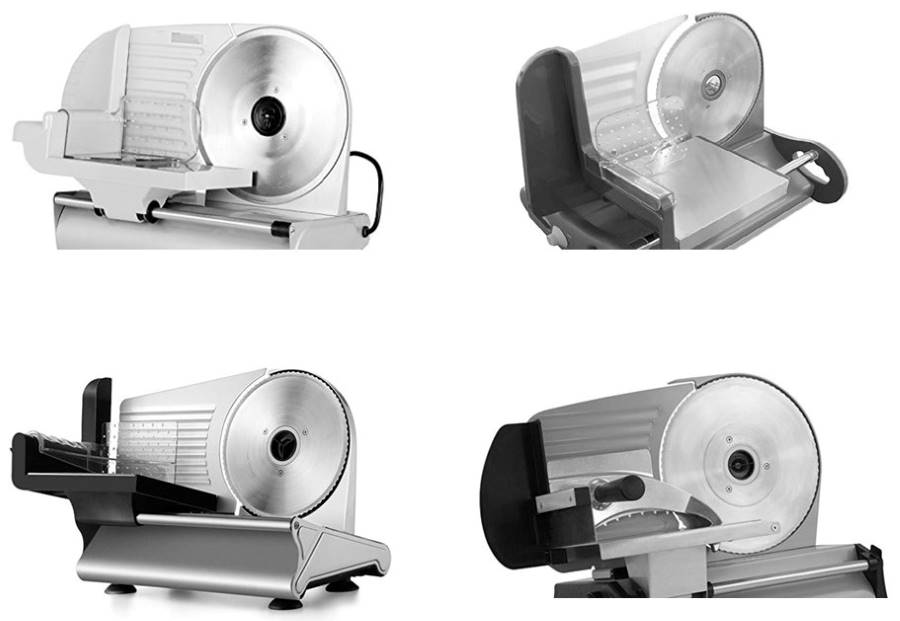
So here is a quick breakdown of all these factors and why I think they are important.
Important Factors for Choosing a Meat Slicer for Thin Slicing
Sharp Flat Thin Blade
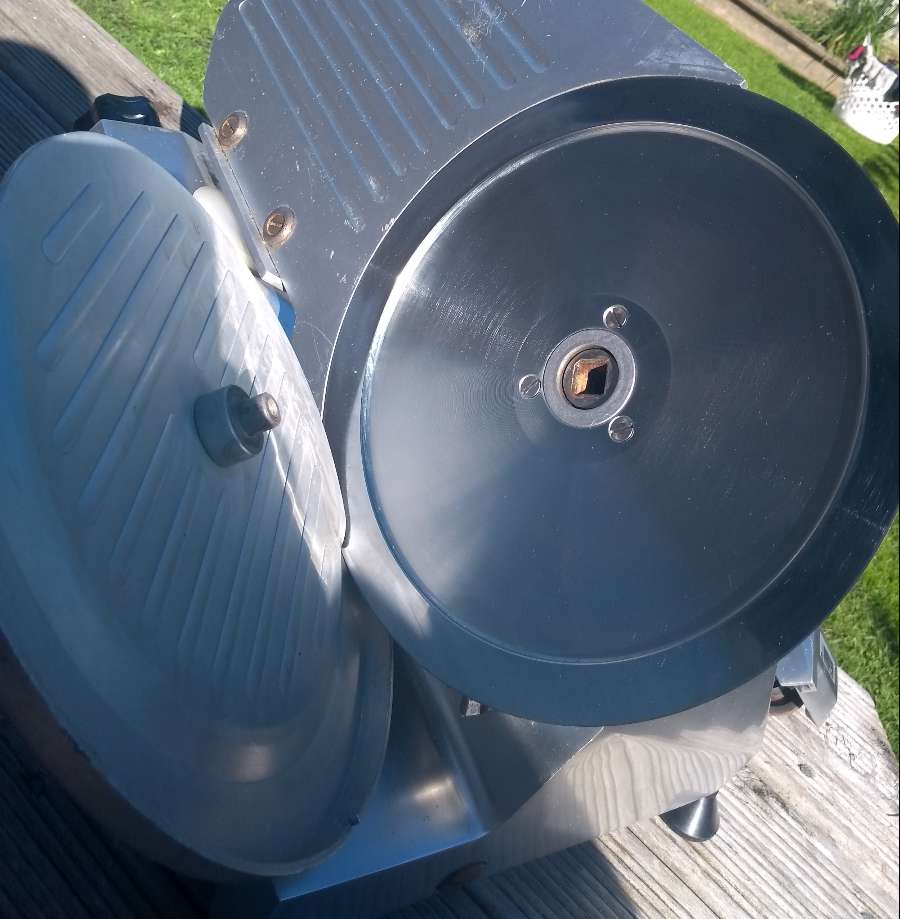
So you see a lot of meat slicers that have a serrated blade. As you check out any butcher or deli, see if you can see a serrated blade. I am sure you won’t find any with them, the reason is they don’t do the job for thin slicing!
Serrated blade slicers are a type of home appliance slicer designed for thicker foods like bread and chunks of meat like thick ham.
Enough Power
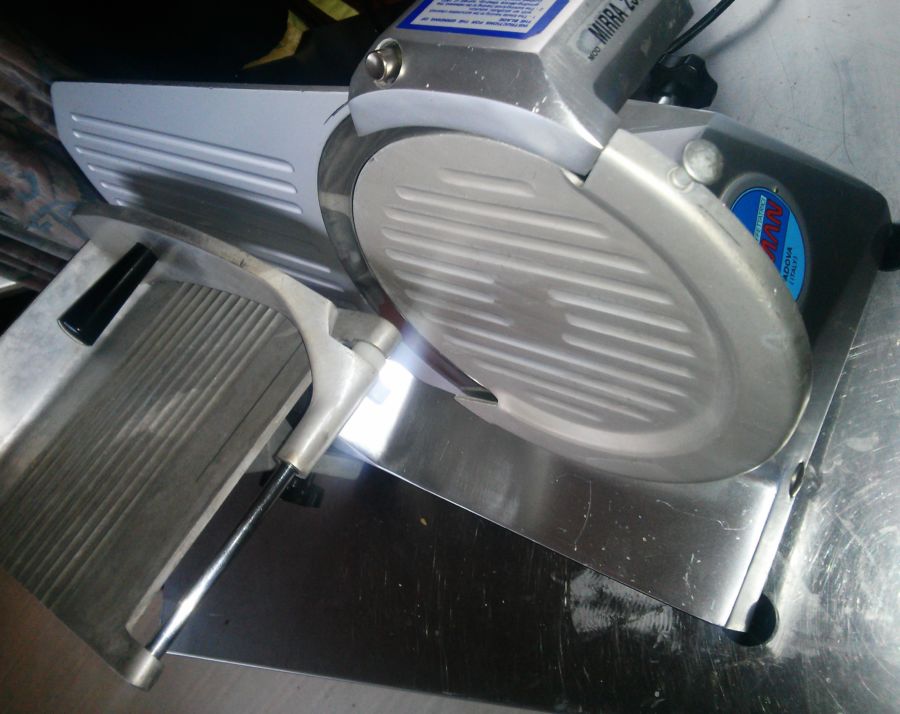
The ones that I’ve seen that work effectively need at least 240W of power a lot of the mid-level commercial style seems to be around 320W.
So, the ones you don’t want will generally be less than 240W. Many of the electric slicers that I see friends using are in the 100-200W range. They’re great for certain kitchen work, but not for wafer-thin slicing!
Precision Controls

If you want a meat slicer that does thin wafer slicing, when you turn the thickness dial, it will react and change incredibly accurately. I guess this comes down to the precision engineering needed to produce it.
Remember to close the blade up when you have finished a run. This will ensure that you don’t have an open blade that could potentially cut you.
There is no other way to get the thin-slice outcome. When I want to have thin transparent slices, My meat slicer has a 1 mm mark and I use about half that setting. Believe it or not, you can slice too thin with a precision meat slicer.
When you get down to ultra-thin slicing, but also changes the flavor and taste. So, I am micro-adjusting to get the best outcome depending on how much aromatics and spices are in my cured meats.
Size does Matter, Match your Needs
There is a bit of variation with the blade size, and also the food tray which is used to guide the food toward the blade.
My meat slicer has a 10-inch blade, which I have found can handle anything I’ve used it for. Once I had a massive lamb roast, I decided to pull out the slicer and get some nice slices.
With all the moisture in the
The meat slicer I recommend generally starts from an 8-inch blade, which may be fine for your circumstances.
B uilt-in Sharpener
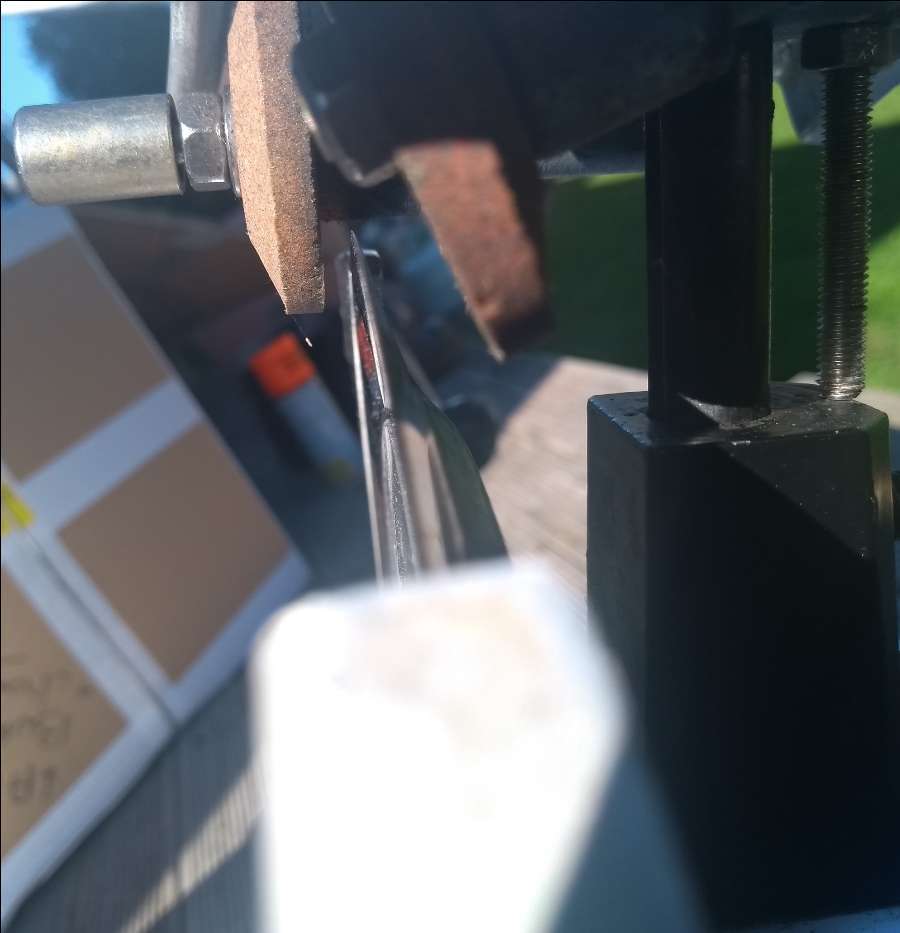
If the meat slicer doesn’t have a built-in sharpener on the top, then it’s probably not going to be suitable for ultra–thin slices. They are pretty standard issues when you start to get into the “semi” semi-professional range. Super simple to use.
This is an apparent giveaway between a machine that will do the job or won’t do the job of thin slicing. If you want to see some decent slicers in detail, I wrote about them here. What I have is a bit top-end, but there are also some cheaper options I have recommended to friends, which worked really well.
For my Sirman slicer, I hold one of the sharpening wheels down for 30 seconds, then stop pushing on that wheel and change over. The other sharpening wheel I push for 2-3 seconds, that’s it. I do it every 8-15 cutting sessions to keep it slicing smoothly.

The Right Slicer will be Heavy
Any decent meat slicer is heavy, so you might want to take this into account when you’re looking at them. I just keep my meat slicer in the cupboard until I need to use it properly.
I generally find that the right meat slicer will be solid alloy metal across most of the design.
Other Important Factors
Size of the Blade & Food Tray
So if you are slicing smaller-diameter food goods, then an 8-inch blade could be fine. You can also cut up what you’re going to slice which makes the job a lot easier.
If you make or buy prosciutto, you have to use 12-inch slicing. It’s just a very large device with a large cutting area, but 10 inches is the compromise, I think.
Your Budget
I think if you’re going to be looking at a meat slicer to do the right job it’s a minimum of around the $300 mark.
Unless you can find something secondhand, you never know if a butchery might be shutting down in your town.
Safety Comes First, Be Super Careful
In commercial kitchens I have worked in, everyone always says that the most dangerous piece of equipment in the kitchen is the meat slicer (more a Mandoline)
I followed one basic rule before, but actually, I follow lots of rules.
Always switch the main power off when you are not operating the slicer.
The second main rule I use is always to
I reckon if you get into the habit of doing these things, you are minimizing the chances of a slice. From those I know, they are the worst injuries!
Home Slicer vs. Butcher Thin Slicer
Now, I’m not saying home slices aren’t useful. But this is all about thin slicing, so hopefully, I can give you some information about getting it right the first time.
If you want a few suggestions for the wafer-thin slicers for at home, I wrote an article that gives some options and a rundown.
Cleaning & Wipe Down
Just so you know what you’re getting into, cleaning a meat slicer does take a bit of time, but it’s not a big deal—it’s just a routine like any other piece of kitchen equipment.
You do have to do it each time, and it takes about 10 or 15 minutes. I guess that’s not more than any other equipment I generally use in the kitchen, anyway.
Salumi Knife – The Alternative
So, if you are just not willing to go for the slicer option, then the alternative is a salumi or prosciutto knife—I get relatively decent results when I take my time.
I have checked out quite a few at the chef and hospitality shops, and when I only have an easy dry-cured fridge project this is what I will use.
One of the most important factors is having a Granton blade. The Granton blade has little egg-shaped grooves along the blade. This allows more air pockets, which
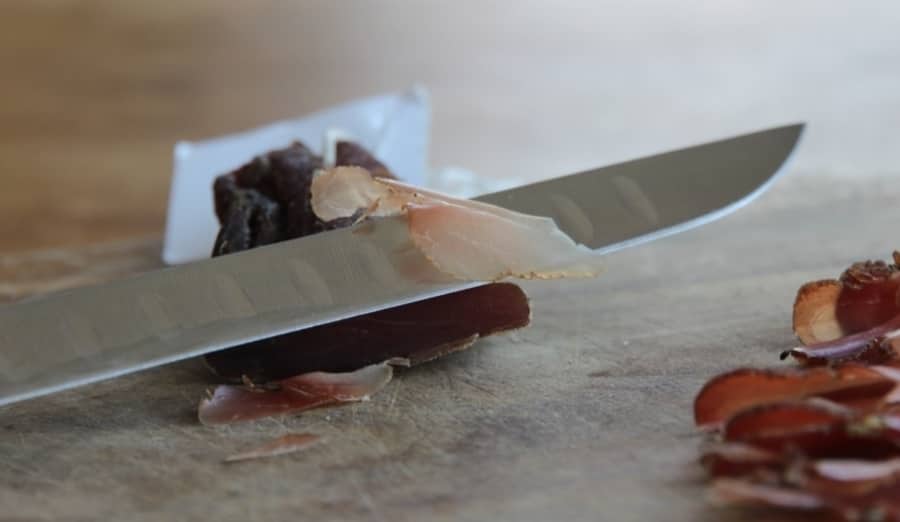
The Salumi blade is flexible; it is used to cut horizontally Iberian, prosciutto, and Parma ham. It’s an ultra-sharp and ultra-thin blade, and you can get pretty good results although it also
I take my time, and it seems to work well, slow & steady.
Here is an article I wrote about decent options for deli slicers at home.

Tom Mueller
For decades, immersed in studying, working, learning, and teaching the craft of meat curing, sharing the passion and showcasing the world of charcuterie and smoked meat. Read More
